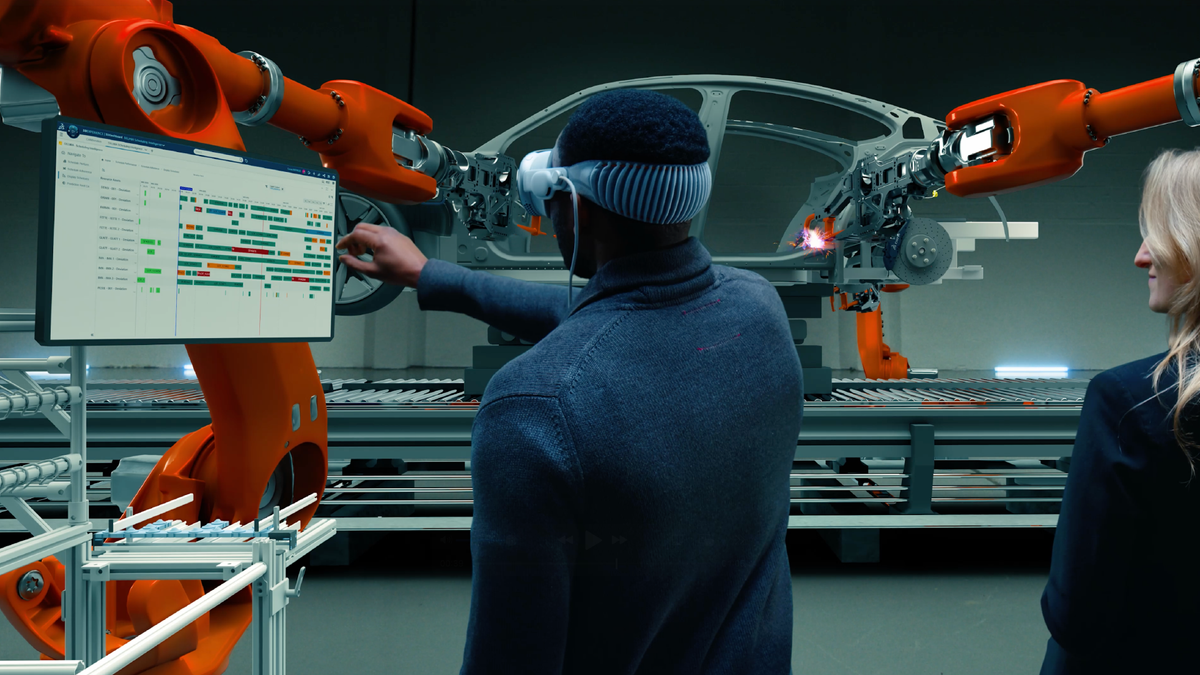West Texas, from the oil rigs of the Permian Basin to the wind turbines twirling above the High Plains, has long been a magnet for companies seeking fortunes in energy.
Now, those arid ranch lands are offering a new moneymaking opportunity: data centers.
Lancium, an energy and data center management firm setting up shop in Fort Stockton and Abilene, is one of many companies around the country betting that building data centers close to generating sites will allow them to tap into underused clean power.
“It’s a land grab,” said Lancium’s president, Ali Fenn.
In the past, companies built data centers close to internet users, to better meet consumer requests, like streaming a show on Netflix or playing a video game hosted in the cloud. But the growth of artificial intelligence requires huge data centers to train the evolving large-language models, making proximity to users less necessary.
But as more of these sites start to pop up across the United States, there are new questions on whether they can meet the demand while still operating sustainably. The carbon footprint from the construction of the centers and the racks of expensive computer equipment is substantial in itself, and their power needs have grown considerably.
Just a decade ago, data centers drew 10 megawatts of power, but 100 megawatts is common today. The Uptime Institute, an industry advisory group, has identified 10 supersize cloud computing campuses across North America with an average size of 621 megawatts.
This growth in electricity demand comes as manufacturing in the United States is the highest in the past half-century, and the power grid is becoming increasingly strained.
The Uptime Institute predicted in a recent report that the sector’s myriad net-zero goals, which are self-imposed benchmarks, would become much harder to meet in the face of this demand and that backtracking could become common.
“This is not just about data centers,” said Mark Dyson, a managing director at RMI, a nonprofit organization focused on sustainability. “Data centers are a practice round for a much bigger wave of load growth that we are already seeing and are going to continue seeing in this country coming from electrification of industry, vehicles and buildings.”
The data center industry has embraced more sustainable solutions in recent years, becoming a significant investor in renewable power at the corporate level. Sites that leased wind and solar capacity jumped 50 percent year over year as of early 2023, to more than 40 gigawatts, capacity that continues to grow. Still, demand outpaces those investments. And the need for more processing power is backing up the interconnection queue and creating stopgap solutions.
Power-hungry data centers in full force further complicate the balance. Data centers in the construction pipeline would, when complete, use as much power annually as the San Francisco metro area, according to a report released on Wednesday by the real estate services company JLL. Most sites coming online this year are already leased; in popular markets, significant space will not open up for at least two years.
“You have to get as many gigawatts live as you possibly can, as fast as you can,” Ms. Fenn of Lancium said. “People are going to cobble that together in whatever way they can.”
That has quickly expanded development beyond the established first- and second-tier markets, such as Northern Virginia, Dallas and Silicon Valley.
Competition is growing in parts of the country offering cheap land and available power. Amazon, for instance, announced last month that it was planning a $10 billion project in Mississippi, the state’s largest economic development project, which includes data centers and solar generating sites.
“Anybody who has any significant source of power has now become a new data center market,” said Jim Kerrigan, managing principal of North American Data Centers, an industry consultancy.
A.I. is only a small percentage of the global data center footprint. The Uptime Institute predicts A.I. will skyrocket to 10 percent of the sector’s global power use by 2025, from 2 percent today.
“They have been building at a breakneck pace with so many other kinds of drivers for demand,” said Andy Lawrence, executive director of research at the institute. “A.I.’s kind of the froth on top.”
Last year, construction of data centers was up 25 percent, according to the real estate firm CBRE. And Nvidia, which supplies most of the high-tech chips powering this technology, last week reported record profit in data center sales, with 2023 revenue hitting $47.5 billion, a 217 percent jump from the year before.
The nation’s energy grids cannot handle that kind of demand, said Christopher Wellise, vice president of sustainability at Equinix, a global data center operator. “Technology is moving faster than our infrastructure has evolved,” he said.
Equinix, which operates 260 data centers across the globe, installed fuel cells from Bloom Energy to help provide backup power to many of its data centers. The company is also reducing emissions with offsets, such as through power purchase agreements, and has squeezed 5 percent more efficiency out of its operations in the past year, Mr. Wellise said. Design firms like Gensler have been experimenting with new designs that feature mass timber to cut down on the embodied carbon of data centers.
And A.I. itself can help: At a data center in Frankfurt, Equinix has used the technology to moderate cooling loads and adjust energy use in concert with changing weather, making a data center 9 percent more efficient.
Niklas Sundberg, a sustainable IT expert and chief digital officer at Kuehne + Nagel, a transport and logistics company in Sweden, said the industry would need to focus on investing in renewable generating capacity.
Some sites have sought to install on-site gas power plants to make up for shortfalls in the grid. It may be cleaner than existing power, but it adds to the industry’s substantial carbon footprint.
And lawmakers have proposed more transparency and action. The Senate introduced a proposal in early February to assess A.I.’s environmental impact. Lawmakers in Northern Virginia, which is known as Data Center Alley, have pushed to mandate sustainability goals for data centers.
Suhas Subramanyam, a Virginia state senator, proposed a number of rules, including one that would require data centers to get at least 90 percent of their power from renewable sources to qualify for subsidies. “I don’t want to stick my kids in a situation where, in 20 years, they have to pay some of the bills for things that we thought were a good idea and turned out not to be,” he said.





